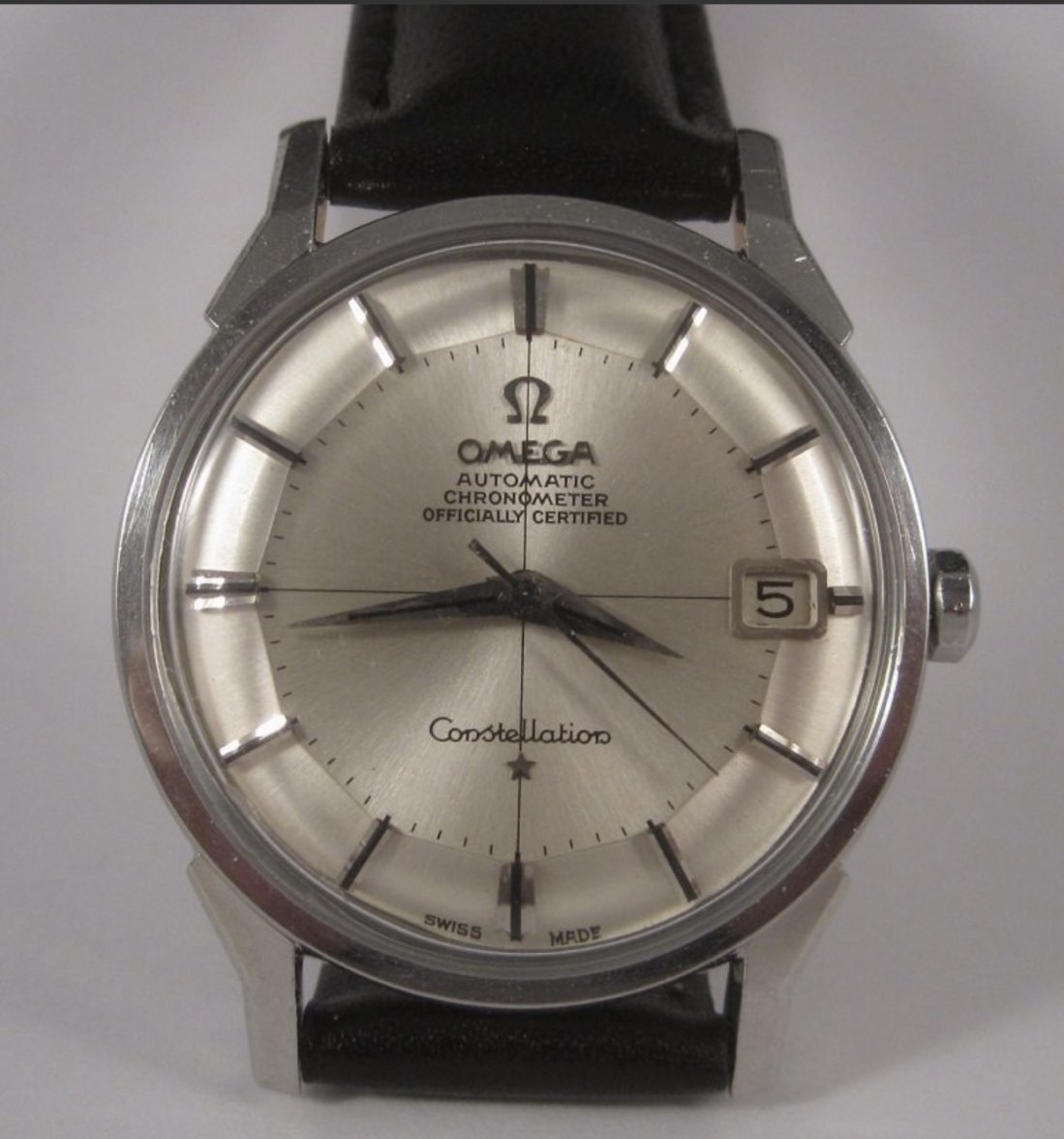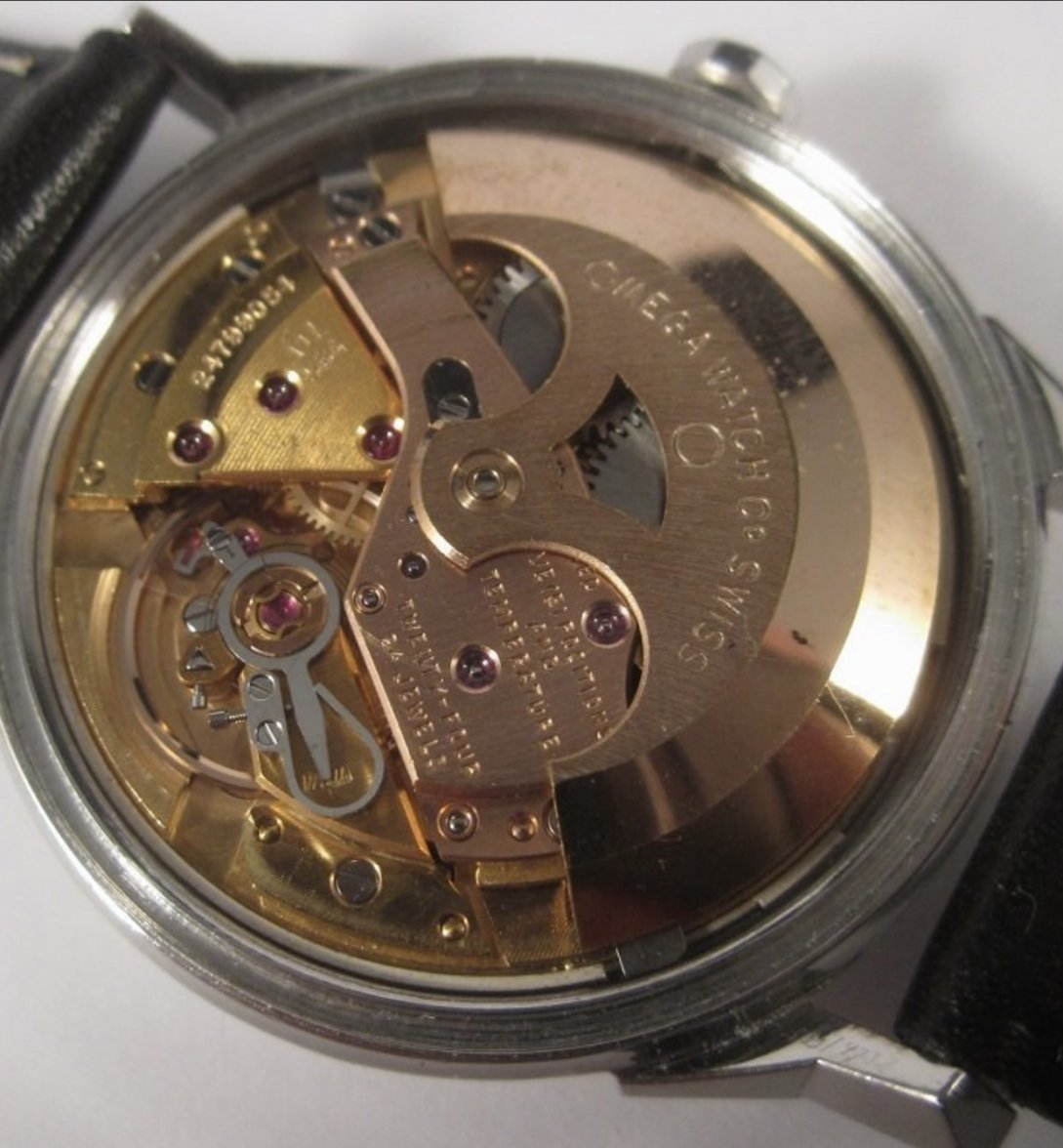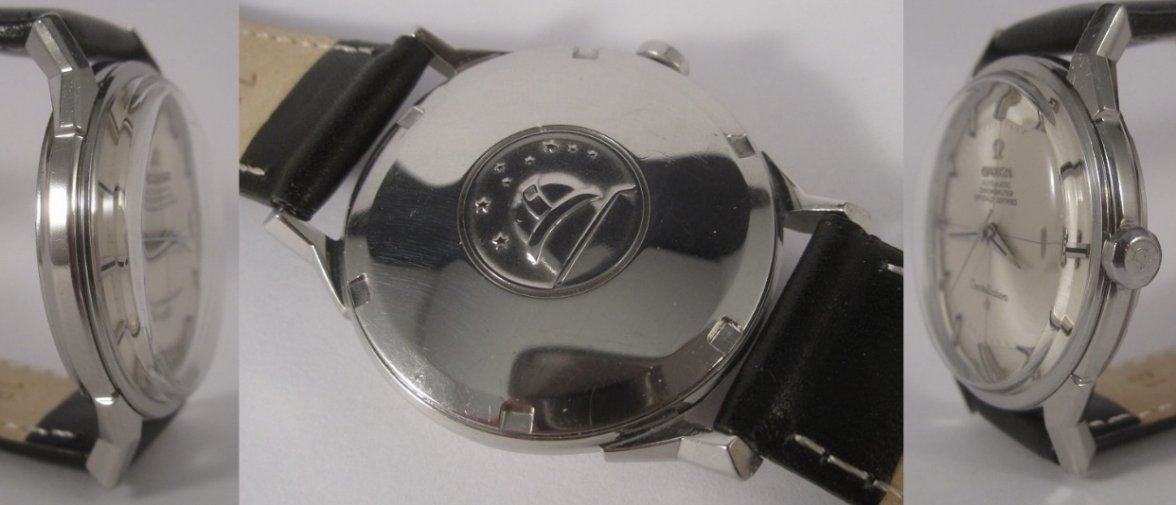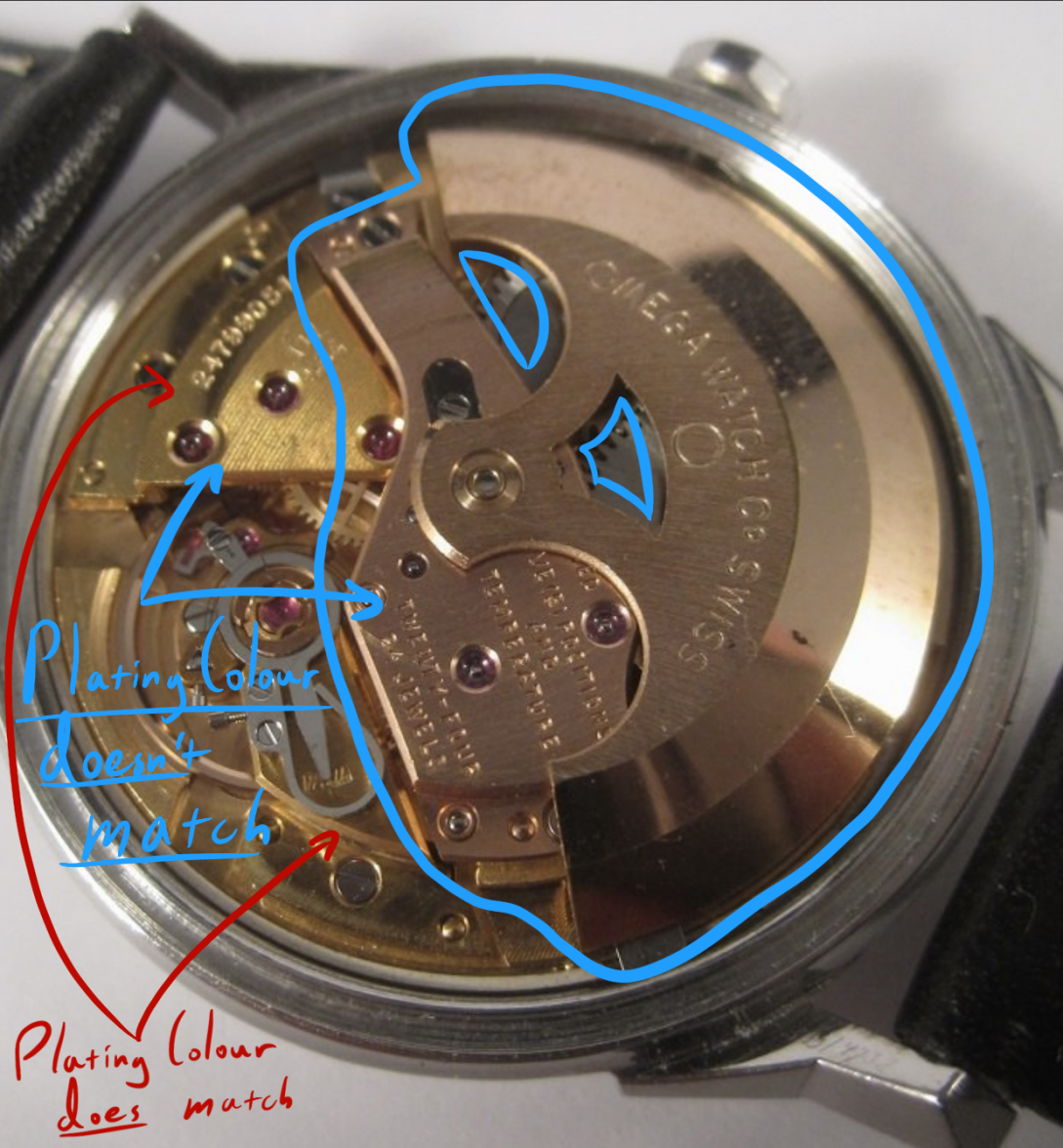168.005 constellation, checks out?
efauser
·What's the asking price?
Gui13250
·Nice case, cross hair, onyx, seems nice to me
SeaMSTR
·Hello, have a read of the articles in the following link. They will give you some pointers about what to look for regarding Constellations. The MOY test is particularly important when trying to establish whether the watch is re- dialled (refinished).
http://omega-constellation-collectors.blogspot.com/2007/08/dial-update.html?m=1
http://omega-constellation-collectors.blogspot.com/2007/08/dial-update.html?m=1
khangct
·Sharp case, beautiful dial, it looks good to me, I would pay $2000.
MtV
·The MOY test is particularly important when trying to establish whether the watch is re- dialled
Except for those cases where original dials fail it, because, Omega being Omega, there are of course exceptions to the rule. 😁
@watchem 2k USD I’d consider overpriced for it. Yes, it looks sharp, no doubt, condition is good - small niggles like the service replacement rotor wouldn’t really bother me. But it’s still a date dogleg, so much, much more common than the no-date ones and apparently less sought-after. These do come up here and on eBay etc every now and then for sale, often 1400-1500$ is plenty to get one.
watchem
·Except for those cases where original dials fail it, because, Omega being Omega, there are of course exceptions to the rule. 😁
@watchem 2k USD I’d consider overpriced for it. Yes, it looks sharp, no doubt, condition is good - small niggles like the service replacement rotor wouldn’t really bother me. But it’s still a date dogleg, so much, much more common than the no-date ones and apparently less sought-after. These do come up here and on eBay etc every now and then for sale, often 1400-1500$ is plenty to get one.
Caliber561
·So you are saying that the rotor is replaced ?
watchem
·The entire automatic assembly is from a different watch. The color of the plating doesn't match the rest of the movement.
Caliber561
·Maybe from a c-case?
nicks
·Am I right that the rotor/automatic parts replacement would not be uncommon for a watch this old?
And that the engraved “o” on the rotor indicates an Omega service part?
And that the engraved “o” on the rotor indicates an Omega service part?
Caliber561
·(Also note the numbers engraved on the underside of the bottom right lug)
Am I right that the rotor/automatic parts replacement would not be uncommon for a watch this old?
And that the engraved “o” on the rotor indicates an Omega service part?
That said, if it doesn't bother you, then by all means, you can go after the watch. If I were you, I'd use the fact that the auto assembly has been swapped to negotiate a better deal. The crystal seems to be a generic replacement which may also help you with that.
watchem
·
(Also note the numbers engraved on the underside of the bottom right lug)
By 'automatic assembly,' I am not referring to just the rotor. The lateral bridge that houses the reversing wheel and automatic winding pinions is what makes up the assembly. While it is true that replacement parts would not be uncommon for a watch this old, an entire bridge being replaced when there is typically no need to do so implies a history of poor maintenance. A lazy watchmaker would rather swap out the entire assembly rather than address whatever issue is within.
That said, if it doesn't bother you, then by all means, you can go after the watch. If I were you, I'd use the fact that the auto assembly has been swapped to negotiate a better deal. The crystal seems to be a generic replacement which may also help you with that.
Caliber561
·Correct me If Iam wrong but could it also be the other way around? Movement is swapped and automatic assembly is original to the watch.
watchem
·It's possible, although if the movement has been swapped it doesn't really matter if the auto assembly is original...
nicks
·
(Also note the numbers engraved on the underside of the bottom right lug)
By 'automatic assembly,' I am not referring to just the rotor. The lateral bridge that houses the reversing wheel and automatic winding pinions is what makes up the assembly. While it is true that replacement parts would not be uncommon for a watch this old, an entire bridge being replaced when there is typically no need to do so implies a history of poor maintenance. A lazy watchmaker would rather swap out the entire assembly rather than address whatever issue is within.
That said, if it doesn't bother you, then by all means, you can go after the watch. If I were you, I'd use the fact that the auto assembly has been swapped to negotiate a better deal. The crystal seems to be a generic replacement which may also help you with that.
Thanks very much for taking time to explain. I see many older Omegas where the plating on this or that part is different from the rest — the way Omega plated its movements can make this fairly easy to spot. Personally I’m not much bothered by this as long as the replacements are competently done, and I agree it’s a talking point with a seller.
OP, let us know if you decided to get it.
watchem
·Thanks very much for taking time to explain. I see many older Omegas where the plating on this or that part is different from the rest — the way Omega plated its movements can make this fairly easy to spot. Personally I’m not much bothered by this as long as the replacements are competently done, and I agree it’s a talking point with a seller.
OP, let us know if you decided to get it.
I think that I will pass on this one all things considered.



